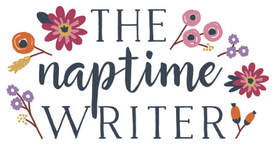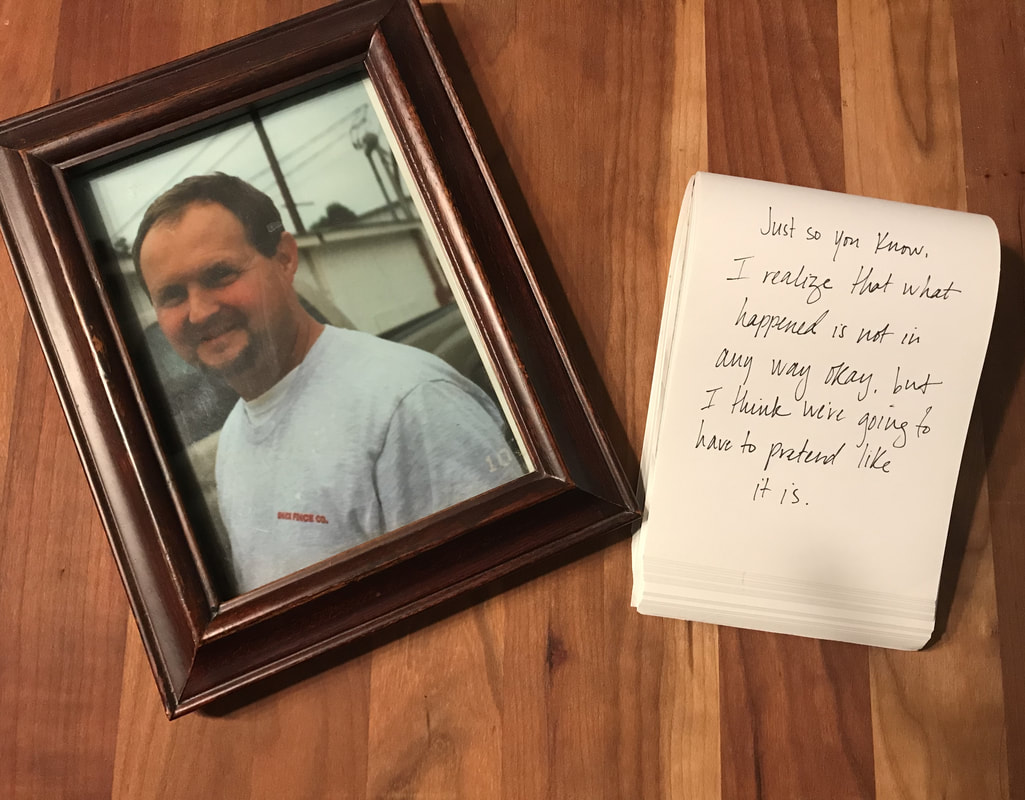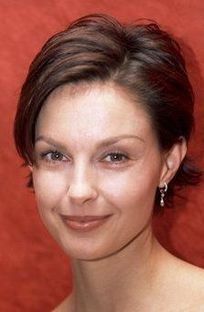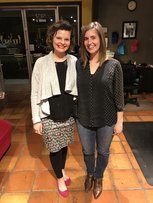|
The summer that I was nineteen, my boyfriend and I were doing long distance, I had adopted a strange basset hound and christened him Mr. Jones, and my beloved dad was quickly dying of Acute Myeloid Leukemia. When the doctor told us that it would be soon, I thought that I was convinced. When dad died in our living room, I thought that I was convinced. When we buried him and my friends and boyfriend returned to their homes, I thought that I was convinced. But coming to terms with dad’s death happened more slowly, and it was as much about understanding the physical and emotional loss of him as it was understanding the eviscerated landscape of what used to be our family.
Julie Buxbaum’s YA book Tell Me Three Things gets so much right about teenage grief—specifically losing a cherished parent—and that’s part of what I love about it. You’ve probably heard about—or experienced—the hole that’s left behind when someone you love dies. It’s a real thing. But what you might not have thought about is how difficult it is to manage that hole, how there are acceptable and unacceptable ways to do so, and how angry you can get at your fellow grievers when they’re not managing it the way you think they should. You don’t always think about grieving as a family process, and like it or not, part of it is. You’re supposed to try to fill the hole in some ways—you can’t leave it gaping wide open, for all the world to see—but you’re not supposed to fill it all the way because you lost a person you love very much. [And anyway, how could you?, when they were so amazing and irreplaceable and gone.] You’re supposed to observe a mourning period, but you think that they should probably mourn a certain amount of time and you another, because you were a daughter who thought he hung the moon, and she was a wife. You feel like they’ve betrayed everything if you think they’ve moved on faster than they should have. [Later, you’ll understand why you were so upset but also how different it must be to lose a parent versus losing a spouse and how crippling that particular loneliness might be. How devastating the betrayal of losing your partner too soon might feel.] And when you’re angry, you’ll wonder who lost the most here?—definitely you—so why does everyone assume that someone else’s grief should be deferred to? No one tells you how utterly devastating it is when you feel like a lost person isn’t being respected, and when their partner moves on and you feel like you lost both parents. Lost everything, and no one cares but you, and people are angry at you for caring so much. But Julie Buxbaum’s utterly amazing Tell Me Three Things does tell you this, and so much more, and it’s all part of this beautifully devastating story. This book hit me where I live when it comes to my experience of grief: as a person who experienced a beloved parent’s illness at a relatively young age, and who was then faced with the aforementioned family grieving matters. I was several years older than the main character, Jessie, when I dealt with my dad’s illness and death, but I recognized parts of her story like they were mine. This book is incredible. A couple of years after her mother dies of cancer, Jessie’s dad suddenly re-marries and moves them from Chicago to California, without asking Jessie how she might feel about that. It’s an entirely different world there, and Jessie finds herself without friends and even bullied. But one day, not that long after starting her new school, she gets an email from Somebody Nobody (SN), and SN volunteers to be her “virtual spirit guide” throughout her new high school experience. It will be an anonymous relationship--she won't know who he is--but SN can answer her questions and tell her everything she needs to know about surviving there. Jessie finally accepts SN’s offer because it turns out that life at her new school is pretty brutal. Emails turn into texts, and she learns that SN lost someone too, a sister. But his loss and loneliness and isolation have worn away at him too, and he’s nervous about taking their relationship from a screen to real life. Meanwhile, her real life relationships are even more complicated. Jessie has trouble identifying with her new stepbrother and her best friend back home, she resents her new stepmom and her generically designed room, and she feels like her dad has selfishly abandoned her to the new life she didn’t even want. Tell Me Three Things deals with the big things, like being a teenager, dealing with grief, and falling in love, and it does so brilliantly. This is a story of light and shadows, of great nuance, and we’re left feeling torn apart and built back up and like we’ve been seen and maybe we can see other people better, too. It’s an empathetic story and made me feel more compassionately toward who I was/am as a griever but how others were/are, too. It reached to the deepest parts of me.
0 Comments
When I was growing up, I heard the word “crybaby” tossed in my direction on more than one occasion. At least, I think I heard it. It was difficult to hear over the sound of my own sobs.
Other variations of “cry baby” have included phrases like: “too sensitive.” “Drama Queen.” “Over-Exaggerator.” “A weakling.” “A snowflake.” To be sure, there were definitely times during my childhood and adolescence when my emotional outbursts warranted some kind of tough love. It’s one thing to get upset if someone compares your physical appearance to a Rottweiler (no names here); it’s another to lock yourself in your dad’s bedroom and cry stormy tears after he posited that John Travolta is gay. (What can I say? I’ve always been a huge fan of Grease.) Even today, there are times when I can’t handle criticism like I should, or when I unexpectedly get upset and witnesses watch me warily. Not to mention the more mundane events, like having a hard time taking the scrutiny of others when I’m late or have to speak in a new class. Or sometimes fighting the urge to panic if I can’t find the person that I walked into the grocery store with. Or getting upset over prolonged trash talk during a game of cards. The fact is, I’m sensitive. I have a hard time handling criticism. My feelings get hurt easily. I sometimes cry when I’m sad, and I often cry when I’m angry. For so long, I’ve been embarrassed about being sensitive. If I’m being honest, I think that part of me has been ashamed. I’ve seen it as a weakness, a character flaw that suggests that I’m not as strong as others. I’ve judged myself by imagining how others are judging me. I didn’t even realize it until recently. Some comments were made to me that upset me, and I was telling my husband Daniel about them. That’s when I said something like, “And I’m probably being too sensitive,” and went off on a tangent about how my being sensitive might possibly negate how I was feeling or affect how I had misinterpreted the comments. That’s when my husband said: “Being sensitive isn’t a bad thing.” It was a huge moment for me. Over the years, I’ve spent some time considering how witnesses to my “sensitive” responses were judging me, assuming, of course, that they were. I didn’t spend any time at all considering that being sensitive might not be a bad thing. It could just be a “thing.” Or, wonder of wonders, it might be a good thing. I have friends who are sensitive, and I don’t judge them for getting their feelings hurt on occasion or for crying when the mood strikes. So why do I judge myself? A more important question is: how can I reconceptualize my own sensitivity? Because, all things considered, I think that I’m far more judgmental of it than others are. I could say that being sensitive makes me more empathetic. That it means that even when I’m a jerk (which still happens, Miss Sensitive or not), I apologize ardently and sincerely, because I hate the thought of hurting others. I could say that diversity of all kinds—including emotional—is powerful and beautiful, and that there are strengths and weaknesses found in us all. I could say that I think it makes me a better writer and reader, because I spend so much time ruminating over what others have said and what I might have said to them and what I might say to them in the future, should the occasion arise. I could say that sometimes, people are mean, and an authentic response is to have my feelings hurt. When that happens, there’s absolutely no shame in acknowledging that I can be hurt, that I expect an apology, and that I’m upset if I don’t receive one. Yeah, I’m going to try to avoid getting worked up over the little things that aren’t worth the time of day. Let’s be real, sometimes my sensitivity does not discriminate; it doesn’t always separate the wheat from the chaff. But I’m also going to remind myself that sensitivity does not equal weakness. I can accept that part of myself—and maybe even be proud of it—tears and sulks and all. ***Never Trust a Pirate Giveaway results*** Congrats to Tonni Coladilla, who would choose to live in the 70s, and who won a mass market paperback edition of Valerie Bowman's Never Trust a Pirate. Yay! When I was in middle school I went to a hair salon in the mall and, using Drew Barrymore or Ashley Judd as my inspiration, asked for a very short cut. That had to have been some point in the late 90s.
Ah, the 90s. Do you remember those halcyon days of fashion? No? Are you sure? Let me refresh your memory about some things that were popular then. The haircut that I requested was shortly after I had The Rachel, that famous shag that launched a thousand ships and that Jennifer Aniston now famously hates. I’m not sure what made me want a short cut—after all, it’s not like those were exactly super popular amongst the teenage girl crowd—but something made me sit in that chair and instruct them to give me the Ashley or the Drew. Perhaps it was my overwhelming optimism that motivated me: the thought that when they spun me around I was going to have a Disney Princess moment: beautiful, bouncing dress, dulcet voice, and twittering birds flying around my head—the whole nine yards. This did not happen. Through the years I’ve embraced lots of different hair styles ranging from the super short (shorter than Daniel’s), short, medium, to the long-ish (when it hung in limp strands to my bust). I’ve had brown hair, reddish hair, brown hair with red highlights, and after this weekend, ombré-ish hair. I’ve had no-bangs, swooped bangs, and straight-across bangs. I’ve had haircuts that I’ve loved, and haircuts that I’ve hated, and I’ve had a whole lot of fun. I’m by no means the most adventurous woman who has ever lived—hair-wise or otherwise—but I’d like to use this platform for really important work. You know, like, encouraging every woman to take a hair risk or two. Would you like to hear some of my thoughts on haircuts? I thought you’d never ask. In most cases, haircuts are not a big deal. (I say this with the disclaimer that hair is not unimportant, and I recognize that hair can have a big effect on how we feel about our appearance, ourselves, etc.) But haircuts are, by their nature temporary, and I don't think that we should hold ourselves back if we get a wild hair (get it?!) about a particular style. I don’t do a lot of super scary things, but, and I know this sounds weird, I love the rush I get when I tell the hairstylist to do something—pixie! Highlights! Full bangs!—without knowing how it’s going to turn out and what I’ll look like afterwards. I could look great, or I could look like one of those living, walking Pinterest fails. But that’s the point. Love it or hate it, hair grows quickly. Haircuts are a way to play with my look and figure out what I like and don’t like without too much investment on my part. Pixie cuts are bold, powerful, and also romantic, and if you keep them on the longer side, like my latest iteration last year, they also aren’t too awful to grow out. Some of my favorite cuts are pixies. They draw attention to the face: suddenly eyes, cheekbones, and jawlines say hello, nice to meet you! On the days when I took the time to blow dry my hair—and this only took four minutes, so theoretically I should have had that time every day—I often felt more feminine than I ever have before. But I’ll be honest and say that on the occasions when I felt less than stellar about my appearance—and no matter how confident you are, those days occasionally pop up—I wasn’t too happy about the cut. There’s nowhere to hide with a pixie, which is fantastic and also scary, depending on your mood. Don’t take a six-year-old to the hair salon when you get a very short pixie cut for the first time. She will likely ask why you are getting a boy’s haircut, making you feel very confident about your brave hair decision. I’ve often read that bobs and lobs are some of the most universally appealing cuts. If you like to stick there, consider taking a risk with your bangs or making your cut asymmetrical (longer in the front, for example), or playing with the color. There are some fabulous men in my life. But men just don’t always get women’s hair. If it were up to my husband, my hair would be like a woman’s in a pre-Raphaelite painting (see above). Long and wavy. And my Dad—who was a prince among men, really did not like the way that I styled my hair. While Daniel loves my hair curly, my Dad preferred it straight and/or pulled back off of my face in a pony-tail. And more than anything, my dad hated the clips that I used to pin my hair down, what he called “barrettes." This seemed to me both a strange aversion on his part and a strangely old-fashioned term for my cute, sparkly hair-clips. While I know that there are certain hair preferences that the men in my life have had or have, I do what I want with my hair. If I want it to be really short, I cut it. If I want it to be long, I grow it out. If I want it to be ombre, I don’t tell my husband what I’m planning, do it, and then come home and say “what do you think?” I should say that I have a very supportive, loving husband, and he honestly thinks that I’m beautiful no matter what my hair looks like. I’m sure that makes it a little easier for me to feel like I can follow my wildest hair dreams. But the bottom line is, if you want do so something with your hair and there are no other more serious factors getting in the way of it, do it. You might hate it. Or you might just love it. Either way remember that your loving, supportive partner chose you for you, not your hair, and that no one expects you to live in a state of suspension where you don’t change your appearance for forty years. After all, as Daniel points out so lovingly, if I had the same haircut I had when we first met, he'd still be hating it and I'd still be flipping out the bottom with my fingers and a cheap blowdryer every morning. These are some of the celebrity haircuts I’ve modeled my haircuts after: Jennifer Aniston, Drew Barrymore, Ashley Judd, Katie Holmes, and according to Dan, Suri Cruise. When my hair is longer and I wear it curly, I think that I have a particular affinity with Weird Al Yankovic. I like taking celebrity’s pictures to hair appointments with me. Sure, I’ll never look like Katie Holmes. But I don’t want to look like her. I just want her hair. (Btw, Holmes is obviously beautiful so that's in no way a dig on her.) Make a hair-salon appointment date with a close friend. This weekend one of my best friends, Laura, and I went to get our hair ombréd. Before I proceed, I’ll say that both of us really like our haircuts and styles, but we also don’t think that we got ombréd. The second thing I’ll say is: going with a close friend can give you the extra dose of boldness that you need. Or it can give you the dose of reason you need if you start thinking that you can handle anything you see on Pinterest. Favorite Places to Find Hair Accessories: Anthropologie and Etsy. My Hair by the Numbers: Number of times I’ve cried after a haircut since elementary school: One. Number of times I’ve cut my own bangs: Probably six. Number of times I regretted cutting my own bangs: One. Number of times I promised a hairstylist that I wouldn't cut my own bangs again: One. Number of perms I’ve had: Two. Average number of weeks I wait for a haircut: Probably eleven. Number of times I wash my hair per week: Seven Number of times someone has said that I have frizzy hair or I've thought that about myself: One million, eight hundred thousand, and three. Some of my favorites hair products: Paul Mitchell Tea Tree Lavender Mint Moisturizing Shampoo Aveda Shampure DevaCurl Frizz-Free Volumizing Foam SheaMoisture Coconut & Hibiscus Curl Enhancing Smoothie Chi Flat Iron Of course, in my opinion, the most important thing is that you feel confident about yourself, and if hair is or is not part of the equation, that's great. But I love haircuts and I think that they can be as casual or as weighty as you want them to be. They can be a fun thing that you like doing for me-time, and/or they can make you feel brave and ready-to-take-charge when that might be the last thing that you're feeling. Wishing you lots of success AND fun on your hair journey. When I was a teenager my mom bought a one-hundred-year-old house on four acres on a winding, narrow road in Shelby county, Kentucky. I don’t remember much about what the house looked like before my mom worked her decorating magic, except that it was in bad shape. I had the vague sense of a house that was decaying, not quite as bad as the barn that was falling down in the back of the house, but badly enough.
My mom has loved old things for as long as I can remember. She’s renovated furniture (including a murphy bed and a super uncomfortable couch), she’s picked up knick-knacks and fripperies here and there—old hats with netting, a toy horse pulling a cart, and stoneware, among others. In her study she has a collection of Native American artifacts (we believe) which were discovered in a field behind her parents' house. And she’s completely renovated an entire house, turning it from something that had the air of abandonment to something that was warm, stately, and inviting, a place that I loved and that I find myself mentally returning to again and again. I would buy that house and that land in about half a minute. I remember lying in my bed on weekend mornings underneath the quilt, seeing the pear-colored light decorate my Prussian blue walls in stripes and hearing something scurry behind the walls or in the eaves. I wasn’t afraid of the sound. It was an old house after all. I remember the twin staircases that led upstairs to mine and my sister’s rooms, and how my mom used to put all of the things that I left strewn around the downstairs on the foot of my steps. I was supposed to take them up right away but I usually just stepped around them, walking carefully so that I didn’t slip on my clothes. I remember how my siblings and I traded bedrooms like they were Pogs, moving from room to room holding stacks of our belongings and settling into each new space with the skill of seasoned travellers. The add-on bedroom that was always slightly colder and had the walk-in closet where I used to sneak and read my mom’s romance novels. The pink bedroom where my sister mostly lived, where my siblings and I occasionally did our concerts. The middle upstairs bedroom, where I lived only briefly and dramatically insisted that I got locked into on one occasion even though no one believed me (largely because we all knew I could have really gotten out if I had wanted). And the Prussian blue bedroom where I lived the most, with my blue recliner and my wicker bookshelf, my numerous pieces of Elvis wall décor, and my boom-box where I loved playing my sister’s Pink CD at full blast. That was our house, but it had belonged to others, too. I remember my mom finding the antique cigarette cards with scantily-dressed women (I think one was on a swing) behind the mantle. A very old receipt which established that the house had been built by the late nineteenth century. The muddy brown medicine bottle, which must have been so commonplace at its time of use and probably wouldn’t have captured most people’s attention now, but which I saw as something special. The detritus of an older time, thrown aside and forgotten or ignored—like the clothes I left on my stairwell—but found and appreciated by someone—my mom, and also myself—who saw in them something to appreciate. What my mom discovered in the walls, and the life we lived there in that floor-squeaking, drafty, high-ceilinged, double-staircased house, has informed so much of what I look for in a home. It was the reason why I encouraged Daniel, my husband, to forget about buying a fifty-year-old white ranch with brick accents in favor of a nearly one-hundred-year-old brick foreclosed house in Lenoir City, Tennessee. I’m all about character. I would rather take a house that is covered in paneling and musty carpet in hideous, sickly shades of green, that has track lights running up the staircase, wobbling railings, and a room which had walls painted in a manner that I could only call “serial killer chic,” over what I saw as a generic ranch any day of the week. Seriously. And of course I’m incredibly lucky because Daniel is the handiest person I know. I helped him demolish this house and carry out the rubble, and I did most of the painting, but he did EVERYTHING else. He’s also a home visionary, and even if he was not incredibly enthusiastic about my choice, he saw something in this house too. So we got our approximately 2600 square foot house for approximately $86,000. On the day of our final walk-through, I inspected the kitchen and took in the green faux marble counter-top, the heavy knotted pine, the holes where the appliances should be, the vinyl floors, and I had my first moment of doubt. What had I signed us up for? But then we started working. We ripped down the walls and ceilings with crow bars and sledge hammers. We pulled up the floors, hoping for original hardwood masterpieces and finding in many cases layers of black underlayment and glue. We took the house down to the studs, carting out wheelbarrows full of drywall and plaster and lathe, tossing the contents over the side of the porch railing into the revolving stream of dumpsters we had in our backyard. Then we walked through our empty house, seeing only the wooden joists, and thought, progress. Along the way we found the detritus of other lifetimes: an old black shoe, which I thought about keeping before reminding myself that it was only one shoe, and not a very cute one at that. Old handwritten letters and Christmas cards from the fifties. Beautiful magazines from the 1920s which an enterprising resident had used to insulate the kitchen. Bags of newspaper clippings which I also removed from the walls. Two pieces of sheet music, which were patriotic ditties from WWII. Photo negatives, which I took to a local specialty shop and had developed. One, a woman standing in front of a car which was parked in front of the ocean. One, an incredibly young looking man who was dressed in a soldier’s uniform. A child’s journal from the 1990s, which I read guiltily before throwing away, unfinished. A long cane pole which my husband threw away for me because he said it was just a stick. Fragments of old records which I found in the crawl-space, half-buried under the dirt. And most surprising of all, a human skull which had been forgotten—or perhaps hidden in an attic space upstairs—and which came tumbling out of the ceiling like a scene out of a horror film. Individuals’ names were engraved on the back, as was the name “U.S. Army Signal Corps.” We called the Lenoir City Police Department and they came to the scene to retrieve it, as stunned as we were to be carrying a human skull out of our front door in one of my gallon Ziplock bags. Ripping down the walls allowed us to see where the original clapboard exterior walls were and how they had become interior walls in places due to the previous owner’s renovations. We could see the evidence that other people had lived there, that they had collected things and had people who wrote to them and magazines they subscribed to. That they went to war and brought terrible things home and then left them here, for us to find all these years later. That they had children who had interior lives and things that they felt were important enough to make record of. I don’t know where those people ended up, what other houses they made their own, but I love that I’ve seen a little of their lives, and that our family is one of many that has called this house home. |
About me.Give me that HEA, please.
Join my mailing list.Want to receive a weekly email with links to my latest blog posts? Sign up below!
Archives
April 2024
Categories
All
|









 RSS Feed
RSS Feed
